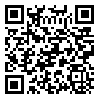BibTeX | RIS | EndNote | Medlars | ProCite | Reference Manager | RefWorks
Send citation to:
URL: http://johe.umsha.ac.ir/article-1-235-en.html
2- - , yarahmadi.r@iums.ac.ir
Background and aim: correspondence analysis method as the best method to optimize matrix functions that using the risk-injury matrix methods are analyzed. This method reduces the information contained in the risk-injury table and to determine the correlation between the variables in the matrix. The aim of this study is to present accidents and occupational hazards dimensions is dependent to risk-injury groups, using occupational accidents that can be managed.
Method: in this study the reports of occupational accidents registered in the social security organization in a period of ten years from the beginning of 1384 until the end of 1393 ( 222,300 incidents) were collected and type of Risk and injury related to any accident identified based on criteria, the International Labour Organization and classified in a risk-injury matrix (18 × 18). Using correspondence analysis of dimensions are identified individually, this dimensions Most indicate the most correlation between risk and injury that facilitate decision-making in the risk assessment companies are covered by Social Security.
Results: Hair criteria recommends dimensions with inertia higher than 0.2 are suitable for the study and interpretation of results, based on this study were obtained from the dimensions of inertia (eigenvalue) greater than 0.2 include the dim1 ,dim2 ,dim3 to consider and the correlation between variables is obtained based on singular value (variable distance from the centeroid). (Singular value of dim1: 0.750, singular value of dimension 2: 0.647 and singular value dimension3: 0.521)
| Rights and permissions | |
 |
This work is licensed under a Creative Commons Attribution-NonCommercial 4.0 International License. |






